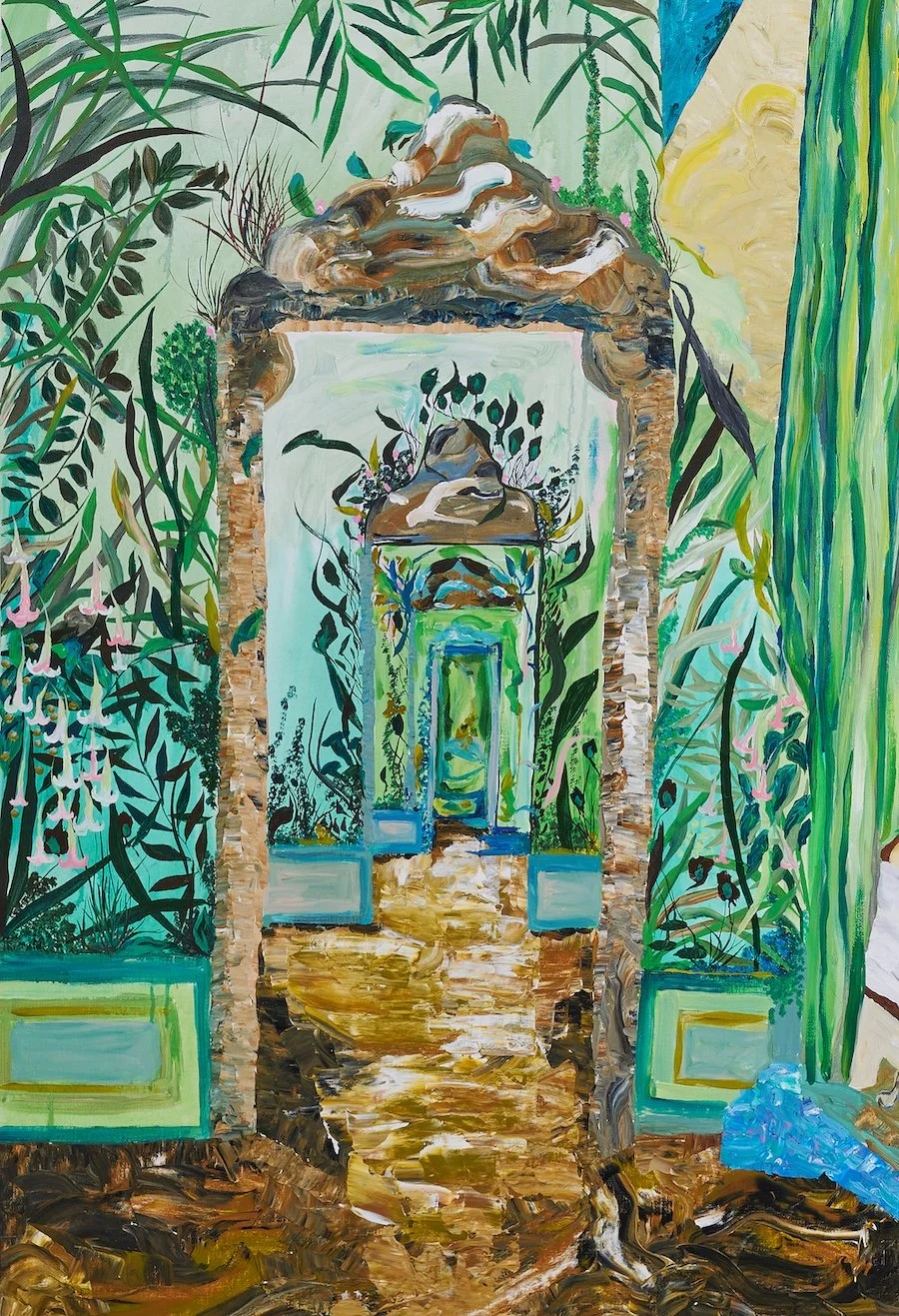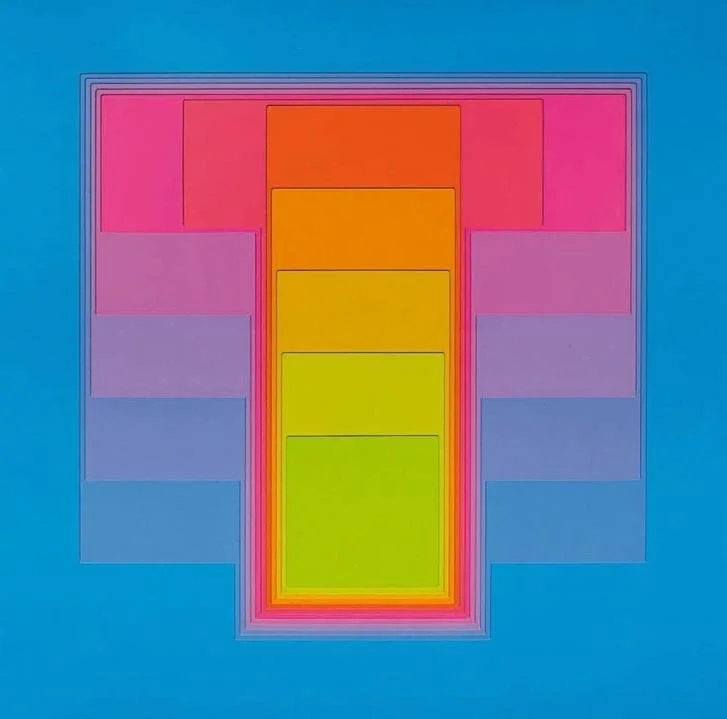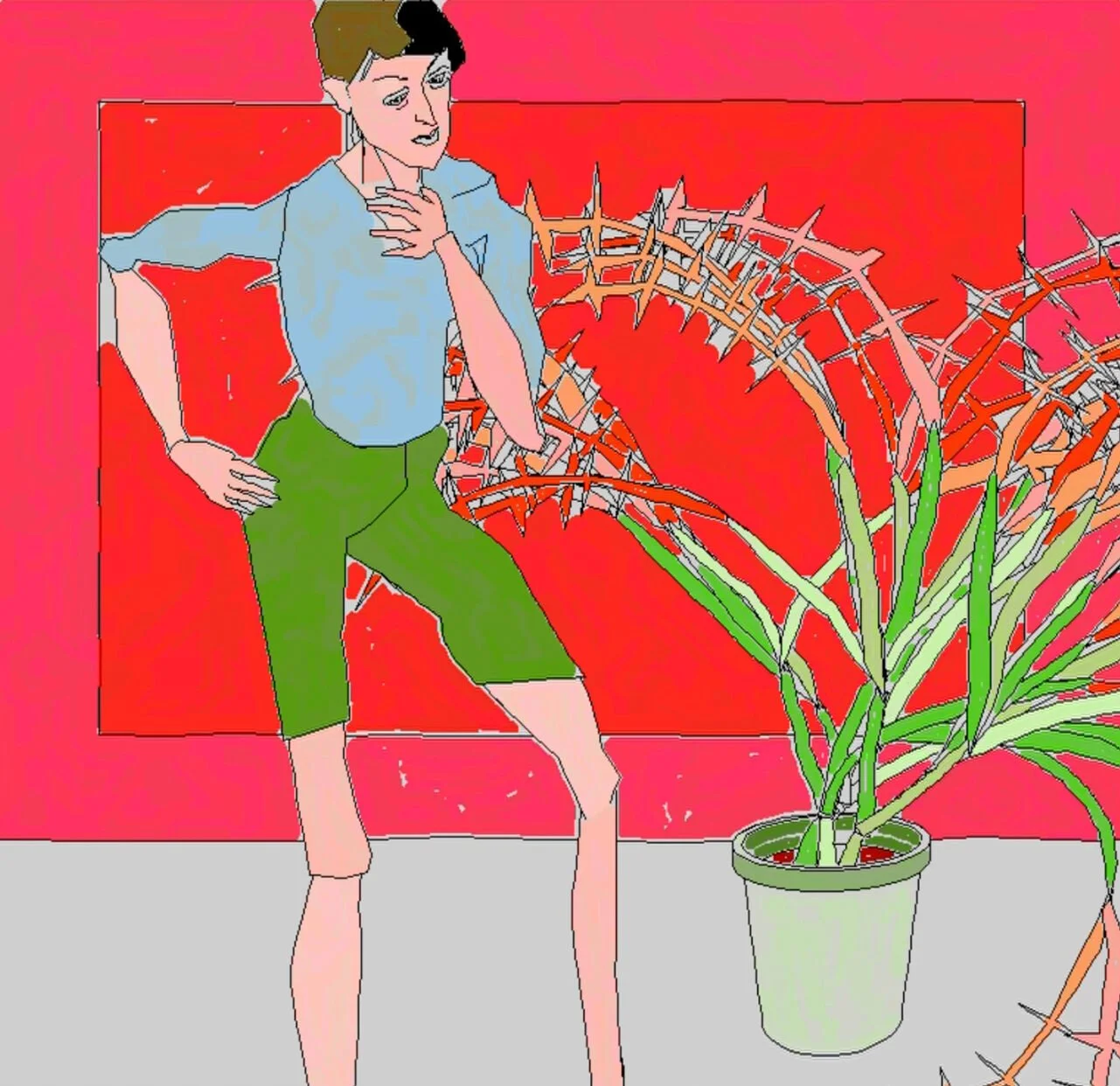Jose Duran
“Elena”
New York, 55 Delancey Street
Exploring the ancestral, colonial, and political codes layered in interior ornamentation, Duran’s paintings are saturated by an electric color palette that gives form to densely collaged compositions. Structured by both organic folds of drapery as well as sharp, jagged forms that resemble fractured stained-glass, Duran makes surprise shifts between the pictorial and abstract. In the same gesture, his work adopts a dense Rococo style—emphasizing the theatrical, asymmetrical, and fantastical—while conjuring symbols of the Transatlantic Slave Trade inextricable to this 18th-century European rubric.
Duran’s new body of paintings are inflected with a sense of longing and a desire to create a place for communion with, healing from, and incarnation of Duran’s deceased mother, Elena. Honoring her as an anchor in his life and a pillar of her community, Duran furnishes an imaginary world where she can luxuriously inhabit his memory. From his memories of traveling between the Dominican Republic and the United States, he recalls Elena most vividly in a reclined posture, smoking a cigarette, visited by friends in the intimacy of her bedroom surrounded by the vibrant and baroque decor popular in the Dominican-American homes of his childhood—domestic settings in which stylistic expression and invention flourished. Named in each work’s title, Duran’s subject-references and found imagery folds into diverse compositions infused with his mother’s spirit.
Duran’s scenes rest between reality and fantasy. As homage to, and sanctuary for, the women who helped raise him, Duran’s ornate interiors are also filled with flora. Many of these details reference the medicinal herbs healers would use to treat Duran throughout his youth in the Dominican Republic. Brought from Asia to Africa, then from Africa to the Caribbean, his ancestors found a way to transform plants that may be used to kill into natural remedies for survival. Continually formulating his own way to cultivate healing from trauma, in his artworks Duran seeds a place where loved ones can rest in comfort—bequeathing the splendors of colonial European trade back to the descendents of peoples who were enslaved to create them and sold to obtain them. Into the three-dimensional space of the exhibition, surrounded by Duran's large-scale textured imagery, we too may inhabit this dazzling restorative realm.






